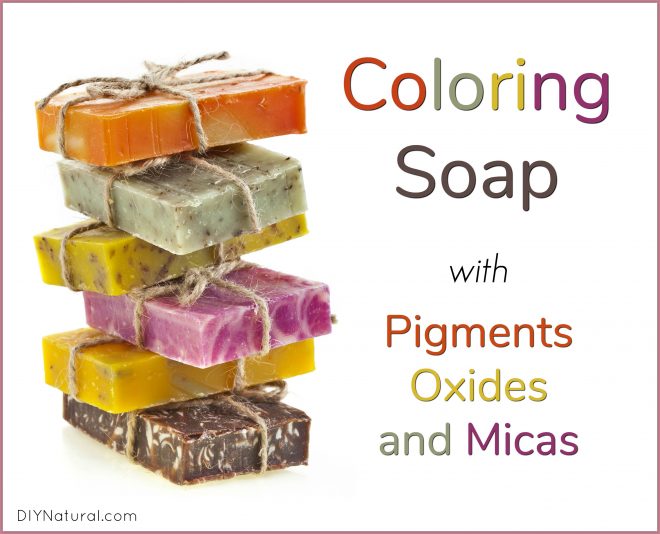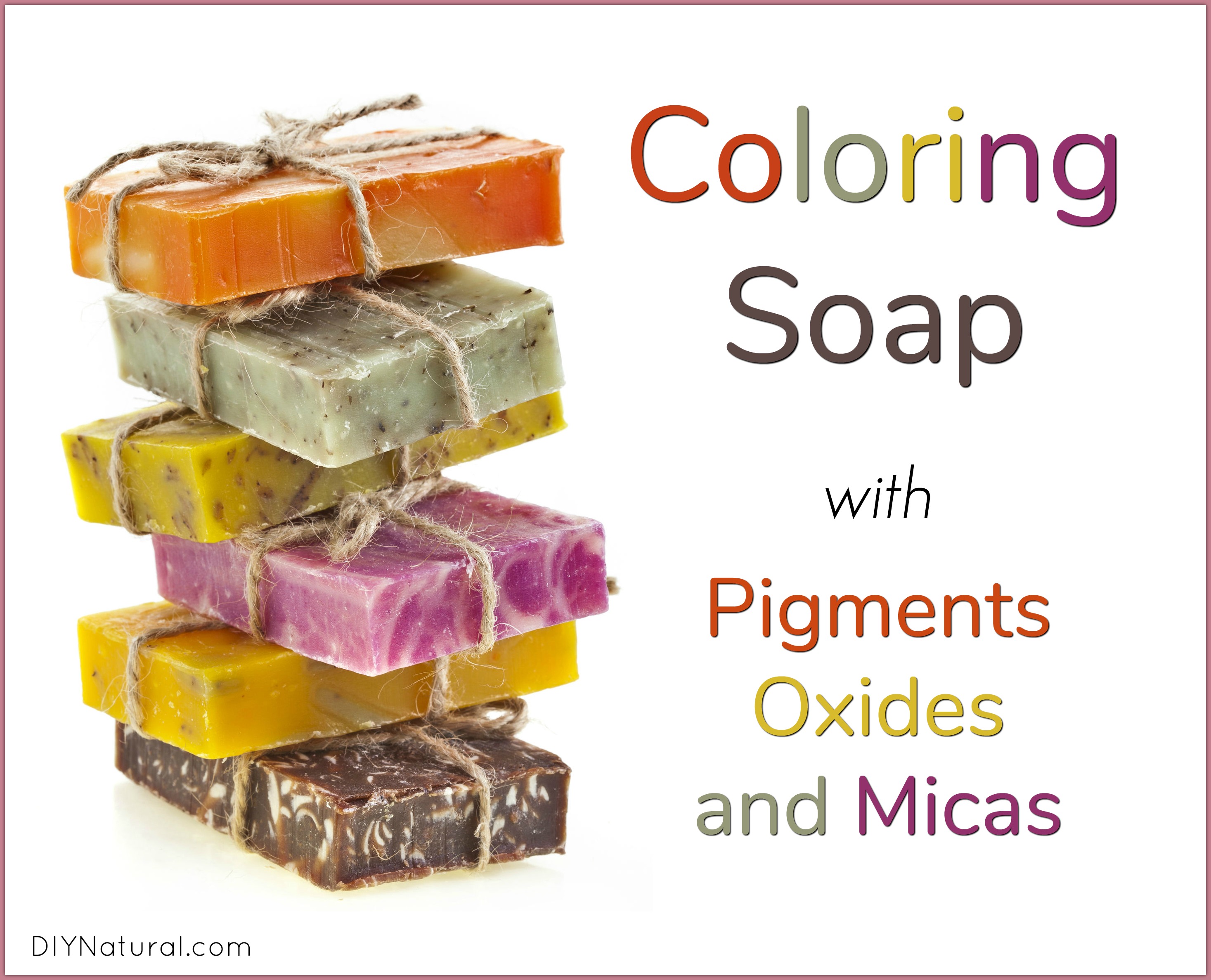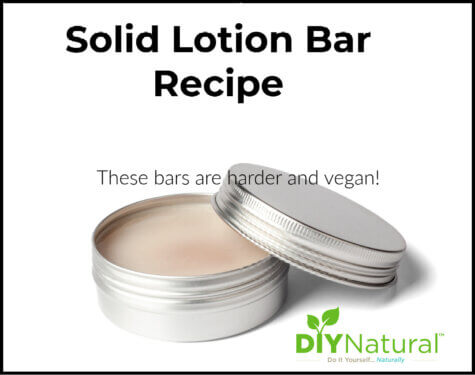
As a soap maker, I often get asked how to create bright, vibrant colors in my soaps and other body care products.
In many natural store-bought products, using oxides and pigment soap colorants is the key to achieving gorgeous color. Micas are another shimmering, colorful addition that can transform your body care products.
Soap Colorants: What are oxides and pigment colorants?
In soap making, oxides and pigments are soap colorants that come in a powdered form. They can provide very strong color, or they can be used in smaller amounts to provide pastel tones.
Pigments and oxides are usually made in a lab now to prevent any chance of bacteria or other compounds from contaminating the mix. Although they are synthetic, they are often made with natural ingredients, and are made to mimic things from nature.
One example is Iron Oxide Red. This is what is commonly known as rust. Most people wouldn’t use actual rust as a soap colorant because it’s hard to know what contaminants might be in it. When it’s made in a lab, you won’t have that worry when you make your special sweetgrass soap in a nice terra cotta red color.
Pigments and oxide soap colorants made this way are also consistent in color, so you can be sure you’re getting the same shade every time you buy it. Because these are made to be like things found in nature, there are not a lot of colors to choose from. (Find a sample kit of oxides & pigments here.)
Soap Colorants: What are mica colorants?
Mica is a rock that naturally occurs in the ground almost everywhere. There are several types of mica, but Muscovite mica is mainly used for soap making because of its lack of color. This is the thin-plated, nearly clear mica that you can peel off in sheets. This mica is sterilized, ground into tiny particles, and dyed to achieve the soap colorants you want. Because they are dyed, you can find them in almost any color of the rainbow. (You can also find all-natural mica colors here, without artificial dyes!)
In clear soaps, such as clear glycerin, you’ll see some sparkle and shimmer as the light hits the particles. In opaque soaps, such as cold process or glycerin with white color, you will get the color without the sparkle.
One drawback: some of the dyes used in micas will react differently in higher pH ranges. I found a really cool dark purple mica that was spectacular in clear soap, but when I used it in cold process soap it turned gray. Always check the label to see if it reacts with pH changes. (Most will tell you if they do.)
Using Pigment and Oxide Soap Colorants
Anytime you use a powder in soap, it should be combined with a liquid before adding to the mix. Water is just about the worst choice here, as most pigments will clump up and look speckled. Pigments and oxides never dissolve all the way anyway, so a slight speckled appearance should be expected. (You just don’t want big clumps.)
The best choice for mixing with powdered colorants is liquid vegetable glycerin. (Find it here.) It will hold up over time, so you can mix a lot and use it over a few weeks. The powder disperses nicely and you can mix it into any bath and body care product.
Start with a small amount, like ¼ teaspoon of pigment, and add a few drops of glycerin to it. Stir well, and add more pigment or glycerin as needed. Remember that as you get more concentrated color, chances of staining will increase. (If you’re not concerned with having an all-natural product, you can add a small amount of polysorbate 80 to bath bombs. This unnatural ingredient helps keep pigments from sticking to the sides of the bath tub.)
An interesting use of one pigment, titanium dioxide, is to leave it powdered when you add it to soap. I made a very dark layered soap that had activated charcoal and blues and purples for a galaxy effect. I added powdered TD to the mold and stirred lightly. Some of the TD ended up in clumps and some broke down, but the effect was like looking at stars in the night sky. TD can also cause “glycerin rivers” in cold process soap. This is where there are streaks of clear soap running throughout the bars. I love the look!
Using Mica Soap Colorants
Except for the pH changes, mica is a lot more forgiving than other colorants. It mixes in better and has a more predictable appearance throughout the product. (Find a beautiful set of colors here.)
To use, mix about 1 teaspoon of mica with 1-2 tablespoons of raw soap. Once you have this blended, mix it into the rest of the batch. I sometimes do a larger amount of color, then when I mix it into the rest, I only stir a bit to get a marbled effect.
If you are mixing into glycerin soap base that is melted, you can mix the mica in a bit of alcohol. I use 91% rubbing alcohol in this case since the scent of the alcohol will fade quickly. Don’t use alcohol in cold process soap as it can cause seizing! Your soap base becomes a hard lump almost instantly.
In bath bombs, you can mix the mica directly into the powdered part, or for a really neat effect, get a powder sprayer. This is a small bottle that is made to spray dry powder instead of liquid. I use it on my soap cakes and cupcakes for a sparkly top!
Pros and Cons of Soap Colorants
Pros
Some of the great things about using micas, oxides, and pigments are that they are consistent in color and they are readily available. It may seem like you are paying a lot at $10 for a 2-ounce jar, but a little goes a long way. I’m still on my first jar of that awesome purple mica and I make a LOT of soap! You can find them online in so many different colors. Just be sure that what you are getting is approved for body care products. (Find a beautiful set of cosmetic grade colorants here.)
Cons
It may be tempting to go for the cheaper ceramics pigments, but most are not approved for body care, and some are even poisonous. They can be an expensive investment, and some can fade in the sunlight. Be aware of this if you sell your products at outdoor events.
Colorants also have a bit of weight to them. They may seem very lightweight, but when mixed with liquid soap, for example, most colors will sink to the bottom. If someone wants to add color to a liquid body care product, I always remind them to shake before using.
Have you used pigments, oxides, or micas in body care products? If so, tell us what you think!
*******



